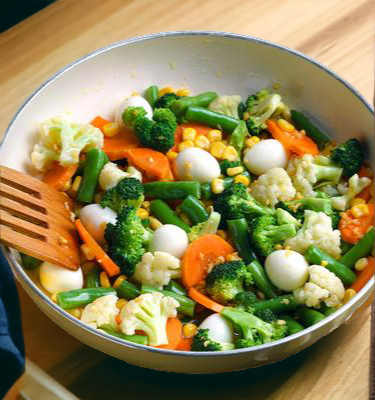Learn how to cook the perfect Fried Tilapia with this easy-to-follow recipe. With just 0.75 kg Tilapia and 1 cup Vegetable Oil, create a crispy and flavorful dish that will leave you wanting more. Whether you choose to serve it as a main course or in tacos, this Finger-Lickin' Fried Tilapia is sure to impress your taste buds.
Introduction:
Welcome to our kitchen, where we'll take you on a delicious journey to cook the perfect Fried Tilapia. Whether you're a seafood enthusiast or just looking to explore new culinary horizons, this recipe is a must-try. Armed with just 0.75 kg of Tilapia and 1 cup of Vegetable Oil, get ready to dazzle your taste buds with this crispy and flavorful dish. So grab your apron and frying pan, because here's how to cook Fried Tilapia like a pro!
1: Gathering Your Ingredients
To start, make sure you have all the necessary ingredients: 0.75 kg of Tilapia and 1 cup of Vegetable Oil. These quantities are perfect for a medium-sized serving. However, feel free to adjust according to your preferences or the number of hungry folks joining you for dinner.
Now that you've got what you need, let's dive into the process of creating this mouth-watering masterpiece.
2: Preparing the Tilapia
Begin by cleaning your Tilapia thoroughly. Rinse the fish under cold water and pat it dry with paper towels. This helps remove any excess moisture, ensuring a crispy and golden exterior.
Once the Tilapia is dry, lay it on a clean cutting board and season generously with salt and pepper. Adding a pinch of cayenne pepper and paprika can also give it an extra zing, but remember to adjust the seasoning according to your taste preferences.
3: Breading and Dredging
To achieve that perfect crunch, it's time to bread and dredge your Tilapia. In a shallow bowl, combine 1 cup of all-purpose flour with your favorite seasonings, such as garlic powder, onion powder, and dried herbs. Mix them well, ensuring an even distribution of flavors.
4: Coating the Tilapia
Now, take each piece of seasoned Tilapia and thoroughly coat it in the flour mixture. Press the fish firmly into the mixture, making sure it adheres to every nook and cranny. This coat not only adds flavor but also helps create a crispy outer layer.
5: Heat Up the Oil
Heat 1 cup of Vegetable Oil in a deep frying pan over medium-high heat. To test if the oil is hot enough, drop a small piece of bread or a pinch of flour into it. If it sizzles and starts to turn golden within a few seconds, then you're ready to fry.
6: Frying the Tilapia
Carefully place the coated Tilapia into the hot oil, one piece at a time. For even cooking, avoid overcrowding the pan. Fry the fish for approximately 3-4 minutes on each side, or until it turns a delightful golden brown. Remember to maintain the oil's temperature by adjusting the heat as needed.
7: Draining and Resting
Once the Tilapia is beautifully golden and crispy, remove it from the pan using a slotted spatula or tongs. Place the fried fish on a wire rack or a plate lined with paper towels to drain any excess oil. Allowing it to rest for a few minutes will help the coating set and retain its crunchiness.
8: Serving Suggestions
Now that your Fried Tilapia is ready, it's time to enjoy the fruits of your labor. You can serve it as a main dish with sides like mashed potatoes, coleslaw, or steamed vegetables for a complete and hearty meal. Another option is to make delectable tacos by placing the fried fish in warm tortillas and garnishing them with fresh veggies, salsa, and a squeeze of lime.
9: Tips and Tricks
- For a healthier option, you can lightly brush the seasoned Tilapia with olive oil and bake it in a preheated oven at 425°F (220°C) for 15-20 minutes, flipping it halfway through.
- Experiment with different spices and herbs to create unique variations of Fried Tilapia that suit your taste buds.
- If you prefer a gluten-free version, substitute all-purpose flour with cornmeal or gluten-free breadcrumbs.
10: Cleaning Up and Conclusion
After relishing every bite of your scrumptious Fried Tilapia, it's time to tackle the aftermath. Ensure the oil has cooled completely before disposing of it, and clean your utensils and cookware with warm, soapy water.
In conclusion, cooking Fried Tilapia is a delightful journey that rewards you with a crispy, flavorful, and satisfying dish. With just a few simple steps and some key ingredients, you can create a dish that will wow your family and friends. So why wait? Dive into the world of Fried Tilapia and treat yourself to a culinary adventure!













